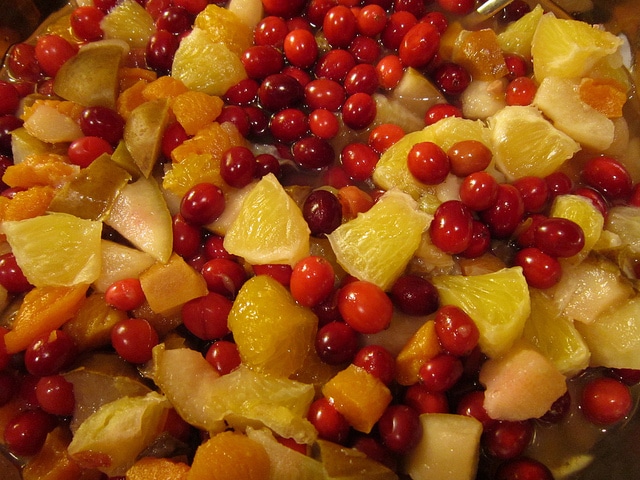The compote originates in the 17th century France, where it served as a dessert. The same term was used for the blending of fruits in sugar syrup, but also for fruit puree. Today, it is probably the most loved can, especially because it can keep fruit that can not be frozen (grapes, for example) and is a faster preservation method than drying.
What kind of fruit can become compote?
Any kind of fruit, fresh or dried, in any combination, according to tastes.
Fruit preparation:
Fruit for the compote must be healthy, free of traces of marks and without altered parts. They wash well under cold water jet. Depending on your preference, you can choose to peel some fruits (apples, pears, quinces) to remove kernels (cherries, sour cherries, apricots, peaches) to cut them into smaller pieces or preserve them as such.
Preparing containers:
This is the most important part of the entire conservation process. Proper sterilization of the pots in which you keep the compote will make it possible to keep it for a long time, not the addition of sugar. The containers you choose for the compote must be very clean and tightly sealed.
The actual preparation of the preserving ingredient:
In the dishes washed and disinfected beforehand, put the choices for the compote. The amount of fruit depends on the proportion of fruit / juice you want. Then add water and spices to taste. If your child’s age allows, you can also add sugar according to your preferences. The vessel will not fill, but it will leave a space of two fingers to allow the liquid to boil.
The filled dishes, with the lid placed, are placed in a pot lined with rags or newspaper paper. The pot is filled to cover three-quarters of the pot compote and boils for 30 minutes from the moment it boils. Allow to cool itself, then label and store.
Storage and keeping:
The most suitable place to keep the compote is the pantry: a cool, dark and dry place. If space allows you, you can keep the compote in the freezer in plastic containers.
Good to know:
• To make sure that the lid thread is good, turn the container with the lid down on the work table. If the liquid flows past the lid, it means that it is not well threaded or defective.
• If the fruit in the compote floats above, and the syrup remains at the bottom of the bowl, the compote container will open and sterilize again, but for a longer time than the first time.
• Pomegranate fruits (sour cherries, apricots, peaches) will not be stored for more than a year, as they accumulate a very toxic substance – hydrogen cyanide.
Sources:
http://en.wikipedia.org/wiki/Compote
http://www.deliciousmagazine.co.uk/articles/how-to-make-compote
Photo by: http://flic.kr/p/aMQ9Xv
